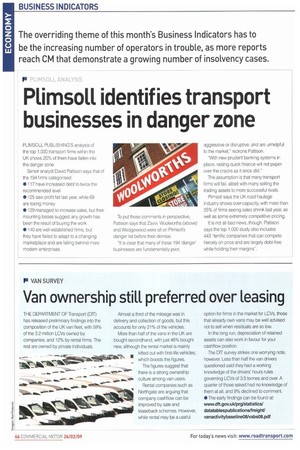Plimsoll identifies transport businesses in danger zone
Page 46

If you've noticed an error in this article please click here to report it so we can fix it.
PLIMSOLL PUBLISHING'S analysis of the top 1,000 transport firms within the UK shows 20% of them have fallen into the danger zone.
Senior analyst David Pattison says that of the 194 firms categorised: • 117 have increased debt to twice the recommended level • 125 saw profit fall last year. while 69 are losing money • 129 managed to increase sales, but their mounting losses suggest any growth has been the result of buying the work • 140 are well-established firms, but they h,ave failed to adapt to a changing marketplace and are falling behind more modern enterprises To put these comments in perspective, Pattison says that Zavvi, Woolworths (above) and Wedgewood were all on Plimsoll's danger list before their demise.
'it is clear that many of these 194 -danger' businesses are fundamentally poor,
aggressive or disruptive, and are unhelpful to the market," reckons Pattison.
"With new prudent banking systems in place, raising quick finance will not paper over the cracks as it once did."
The assumption is that many transport firms will fail, albeit with many selling the trading assets to more successful rivals.
Plimsoll says the UK road haulage industry shows over-capacity, with more than 25% of firms seeing sales shrink last year, as well as some extremely competitive pricing.
Ft is not all bad news, though. Pattison says the top 1,000 study also includes 443 "terrific companies that can compete fiercely on price and are largely debt-free while holding their margins'.
















































































































































